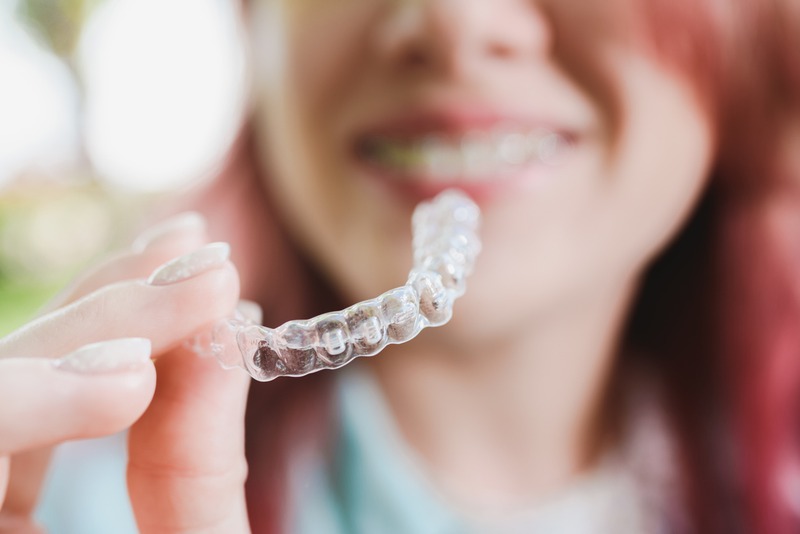Maintaining dental aligners may seem like a daunting task, but all it takes is some dedication and attention to detail. By taking care of your aligners, you not only enhance their effectiveness but also promote oral hygiene. This article will delve into the best practices you can adopt to maintain your dental aligners. Whether you’re just starting with aligners or you’ve been using them for a while, these tips will guide you toward optimal results. Let’s get started.
Avoiding Stains with Proper Cleaning
The first step in maintaining your dental aligners is to clean them properly. It can be tempting to pop out your aligners and put them back in without a second thought, but taking the time to clean them regularly can prevent stains and keep your aligners looking almost invisible.
-
Brush Regularly: Gently brush your aligners every day with a soft-bristled toothbrush and clear, unscented soap. Avoid using toothpaste, as it can be too abrasive and scratch the aligners’ surface.
-
Rinse Often: Whenever you remove your aligners, rinse them under lukewarm water to remove saliva and plaque.
-
Utilize Special Cleaning Solutions: Various cleaning crystals or solutions are designed specifically for clear aligners. These products can penetrate the crevices of your aligners more effectively than regular brushing.
Handle with Care to Avoid Damage
Aligners are made of sturdy yet flexible materials that need to be handled with care. Failure to do so can damage them and potentially extend treatment time.
-
Use the Case: When not in your mouth, always store your aligners in their protective case. This prevents loss or damage.
-
Avoid Excessive Heat: Hot temperatures can warp the aligners. Keep them away from direct sunlight, hot water, or steaming drinks.
-
Careful Removal: Don’t force them out; instead, use an aligner removal tool or your nails gently to avoid bending or breaking them.
Stay On Schedule for Optimal Results
It is critical to stay committed to wearing your aligners for the prescribed amount of time (usually 20-22 hours a day). Every deviation can potentially affect the progress of your treatment.
-
Follow Your Treatment Plan: Stick to the schedule set by your orthodontist for changing the aligners. Delays in swapping can slow down your progress.
-
Commit to Wearing Them Daily: Only remove them for meals, drinking anything other than water, brushing, and flossing.
Combatting Bad Breath and Bacteria
No one wants to feel self-conscious about their breath while straightening their teeth. Luckily, there are steps you can take to keep things fresh.
-
Maintain Oral Hygiene: Brush and floss teeth thoroughly before putting your aligners back in.
-
Use Mouthwash: A gentle mouth rinse can reduce bacteria in your mouth, thereby improving your breath.
-
Hydration Matters: Staying hydrated promotes saliva production, aiding in keeping the mouth clean and fresh.
Monitoring Oral Health During Treatment
Aligners can sometimes trap food and bacteria against the teeth, leading to cavities or gum issues. Regular check-ups ensure your oral health is monitored throughout your treatment.
Regularly visiting your dentist is essential, as they can detect any potential issues early and correct them before they worsen. Many dentists provide personalized advice on maintaining oral health tailored to aligner wearers.
Understanding the Dos and Don’ts of Eating
Wearing aligners means adapting certain eating habits to protect them from damage or staining.
-
Remove Before Eating: Aligners should always be removed when consuming food to avoid cracking or staining.
-
Watch Out for Sugars: Eating sugary snacks while wearing aligners can lead to cavities as it traps sugar against the enamel.
Storage Tips for Aligners
Proper storage is another cornerstone of aligner care. Consider these tips when your aligners aren’t in use.
-
Keep Them Safe: Always use the case provided by your orthodontist for storing aligners.
-
Label Accordingly: Label your aligner case with your name to avoid mix-ups if you set them down in public spaces.
Pay Attention to Adjustments and Tightness
As you progress in your treatment, each new tray might initially feel a bit tight. However, this tightness is a sign that the aligners are moving your teeth as intended. Yet, if discomfort becomes unbearable, consulting with a cosmetic dentist can provide guidance on easing the transition between aligners and offer tips to make the process more comfortable.
Dealing with Lost or Broken Aligners
Accidents happen, and if you lose or break your aligners, it’s vital to act quickly to keep your treatment on track.
-
Contact Your Practitioner: If you have any issues, contact your orthodontist immediately. They can guide you through the next steps and provide replacements if necessary.
-
Adhere to Your Current Schedule: Wear the previous set of aligners or advance to the next set (if recommended) while awaiting replacements.
Getting Assistance from Experts
Throughout your journey with dental aligners, there might be instances where you require expert advice. Residents seeking Invisalign Boca Raton treatment often attend specialized clinics where the orthodontists provide dedicated care and solutions to any issues they might face.
Final Thoughts
To sum things up, maintaining your dental aligners isn’t rocket science, though it does require consistency and care. From proper cleaning, handling, and storage to regular check-ups and handling emergencies, these best practices are instrumental in ensuring the effectiveness of your aligner treatment. With regular maintenance, not only will you enjoy better oral health, but you’ll also see results on your path to a confident smile.

